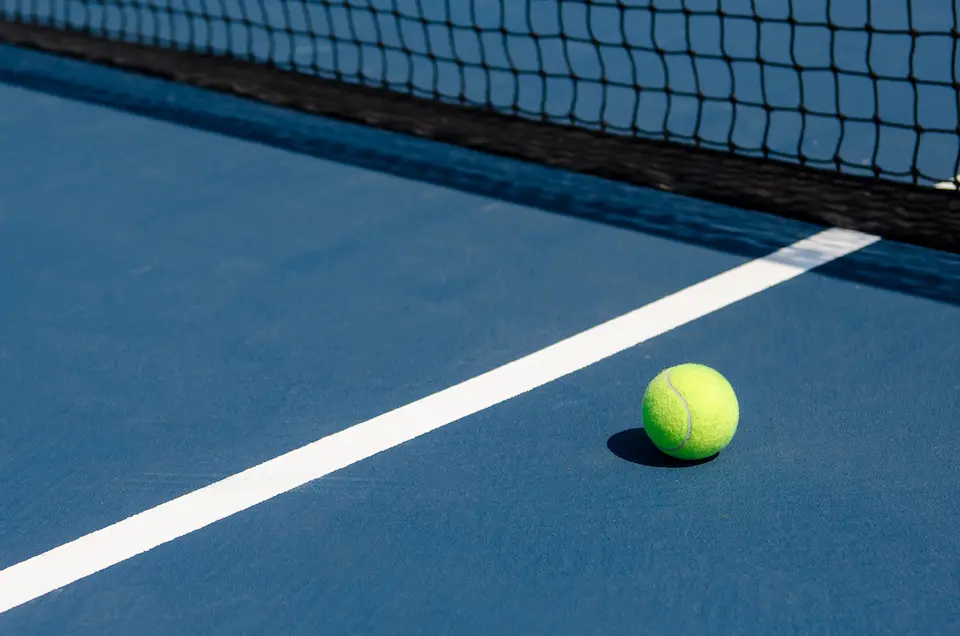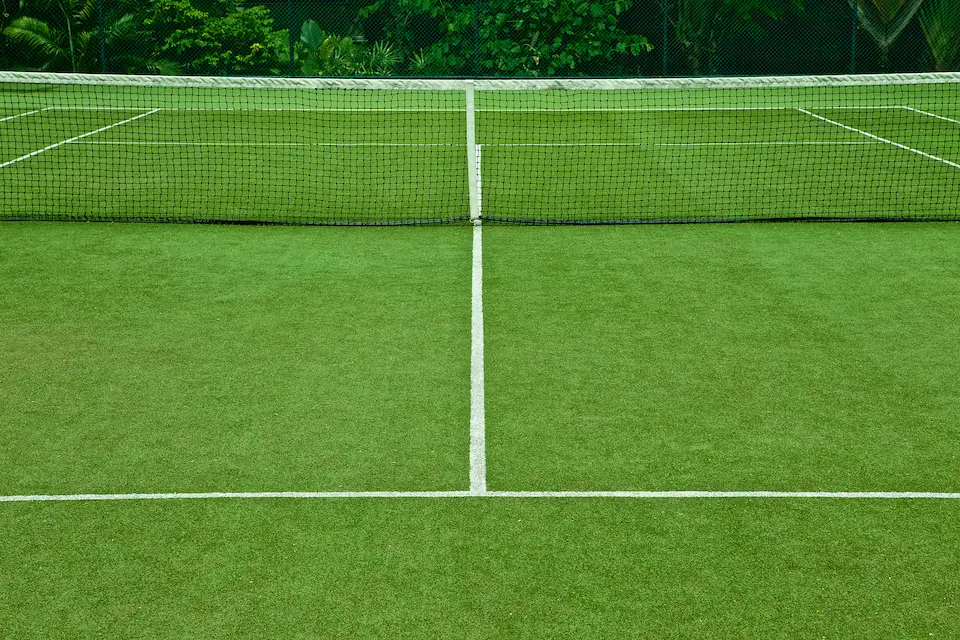All tennis courts are not created equal. They are made from different tennis court surface materials that can truly impact your game. Whether you’re looking to build a new court or want to know the best surface type for playing tennis, we have all the information you need to know when it comes to tennis court surfaces.
The tennis court construction team at North State Resurfacing has put together this guide on the tennis court surfaces to help you choose the right material so that you can get the most out of your game.

Tennis Court Surface Layers
Formation
When you’re looking at tennis court surfaces, it’s important to know about the layers included. The first layer is referred to as the formation. It provides a flat soil for the court to be built on. It also blocks roots and organic matter from damaging the court.
Foundation
The second layer is referred to as the foundation. It prevents the court from frosting and is added to allow the court to drain.
Regulating Base
The regulating base is the third layer. Its composition varies greatly depending on the surface. The layer creates a stable and flat surface for the surface material to rest.
Wearing Surface
The wearing surface is the final layer and is what you see when you look at a tennis court. It can be made out of several layers, depending on the surface type.
Comparing Tennis Court Playing Surfaces
Hard Court Surfaces
If you’ve played on a hard court surface, you’ve played on the most common and widely used surface throughout the world, especially here in the United States. Hard courts are made from an asphalt or concrete base. Asphalt tennis courts are usually coated with a 100% acrylic layer.
Why Choose Hard Courts?
- Very low maintenance
- Many surface colors to choose from
- Good for indoor tennis courts and outdoor tennis courts
- Optimal for multi-surface courts
- Cleaner to play on than other surfaces
- Drains quickly
North State Resurfacing is revolutionizing the hard court surfacing industry with its innovative Polypave Court Shield. This system offers a groundbreaking alternative to traditional asphalt and post-tensioned concrete courts, addressing common issues like cracking and surface durability.
By applying Polypave Court Shield, a technologically advanced polyester overlay, directly over an asphalt base, North State Resurfacing provides a mechanically reinforced surface that significantly enhances crack prevention capabilities. This method not only simplifies the installation process compared to the complex techniques required for post-tensioned concrete but also offers a cost-effective solution without compromising on performance and longevity.
With Polypave Court Shield, North State Resurfacing is setting a new standard for hard court surfaces, making high-quality, durable tennis courts more accessible and easier to maintain.
Clay Court Surfaces
Clay courts are softer compared to other surfaces. They include natural clay and fast-dry court surfaces. Natural clay blends sand and silt, while fast dry courts are made from crushed stone or brick. Since clay courts require watering and rolling, don’t expect to be able to use them when the temperatures drop.
These courts have a high bounce rate which leads to longer rallies. If this is something you’re looking for in your game, you’ll want to opt for clay courts.
Why choose clay courts?
- Softer playing surface
- Dries quickly after the rain
- Ability to slide while playing
As we mentioned, clay courts do require watering, which can make them on the high-maintenance side. This can be time-consuming and expensive. There are also limited colors available with these types of court surfaces. While they do provide a softer playing surface, you should expect slower playing conditions.

Grass & Synthetic Turf Court Surfaces
Grass courts and synthetic turf are also options. Synthetic grass is typically artificial grass that is filled with sand. This helps the grass blades to stand up and provides a solid surface for rebounds. Synthetic grass also dries faster than natural grass courts.
Natural grass needs the right soil conditions, water, and type of grass for the climate it is in. Both types of surfaces provide soft playing surfaces and fast playing conditions
Why choose artificial grass courts or natural grass courts?
- Cooler surface in hot playing conditions
- Allows sliding during play
- Fast play
As you look at the different surfaces, keep in mind that a natural grass court is high maintenance. It requires a great deal of mowing, fertilizing, and striping. You also have to be mindful of overplaying on the court and quickly wearing out the surface. While grass courts provide a quick game, there is a low bounce rate.
With synthetic grass, keep in mind that it requires brooming and the addition of sand. You can also experience mold issues.
Carpet Courts
Carpet courts are made with asphalt and a layer of rubber material over them. This allows for enough cushioning if a player falls. This is a good surface choice for tennis players looking to serve big and hit hard.
Why choose carpet court surfaces?
- Durable surface
- High shock-absorbing qualities
- Resists cracks due to extreme temperatures and wear and tear
- Anti-skid properties
- Sustains water spilling
Keep in mind that the material used for carpet courts is higher than others. So, if you’re leaning towards this court surface, be prepared to pay more money upfront.
Tips to Choose the Right Tennis Court Surface
There are several factors to consider when choosing a tennis court surface.
Speed
Be aware of how fast the surface speeds up the ball as well as the ball bounce. Know what you’re looking for in your game so that you can choose the right tennis court surface to play on.
Unique Features
Each type of tennis court has unique features. Grass courts tend to have a fast pace and low ball bounce. They also require a great deal of maintenance.
Clay tennis courts have a slow pace and high ball bounce. There is also a great deal of traction. They are less expensive to build but require a lot of maintenance.
Hard tennis courts are low maintenance and have a medium-to-fast pace. A hard surface court is the most popular tennis court surface out there.
Are You Looking to Build a Tennis Court? Contact the Pros at North State Resurfacing
If you’re looking to build a tennis court, the team at North State Resurfacing is here to help. We can go over the different court surfaces so that you can choose the surface that best suits your game and budget. You’ll find that our friendly and knowledgeable staff is here to help! Call us today at (919) 365-7500 or reach out to us online to schedule an appointment. See what our team can do for you!
